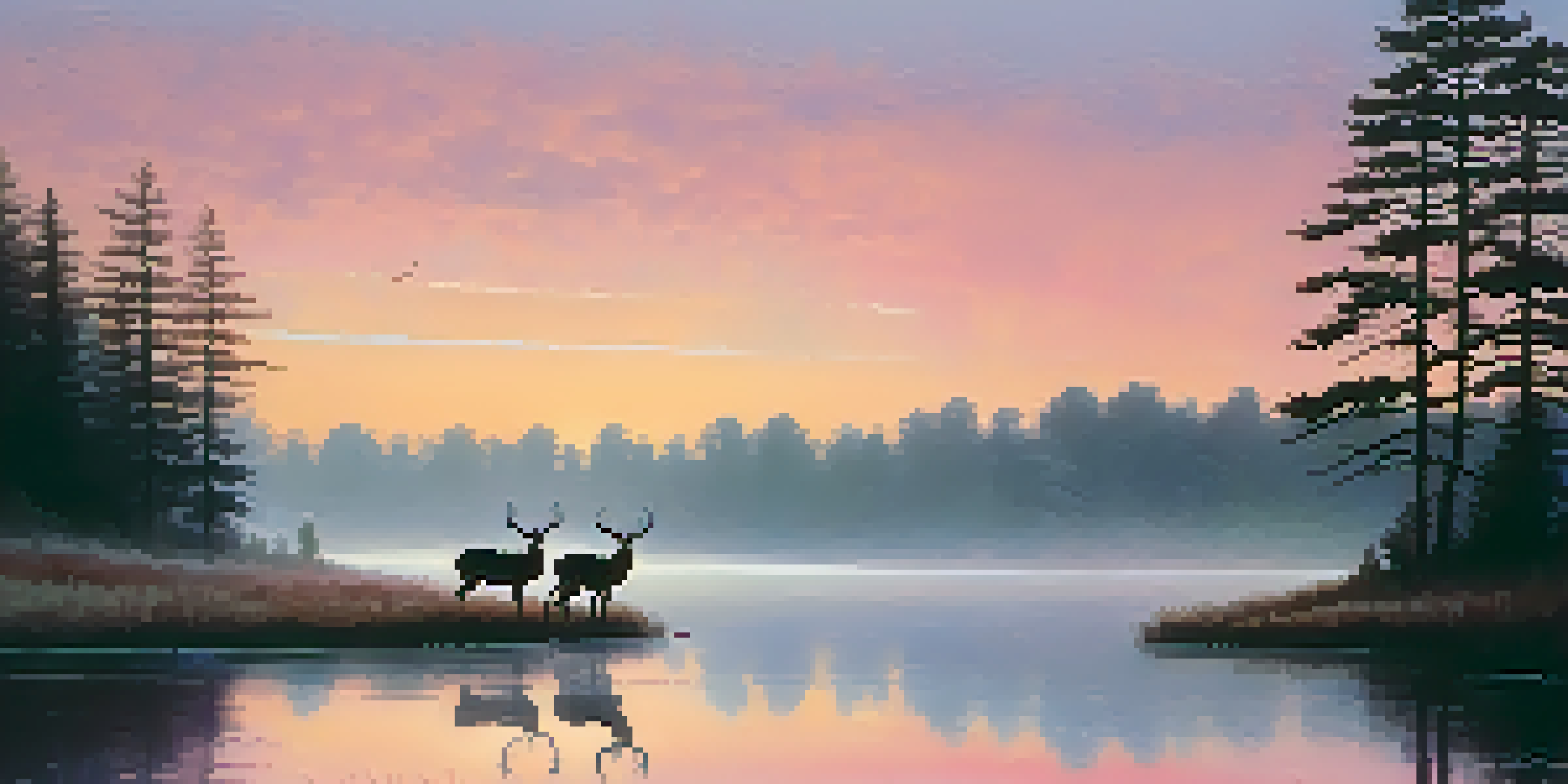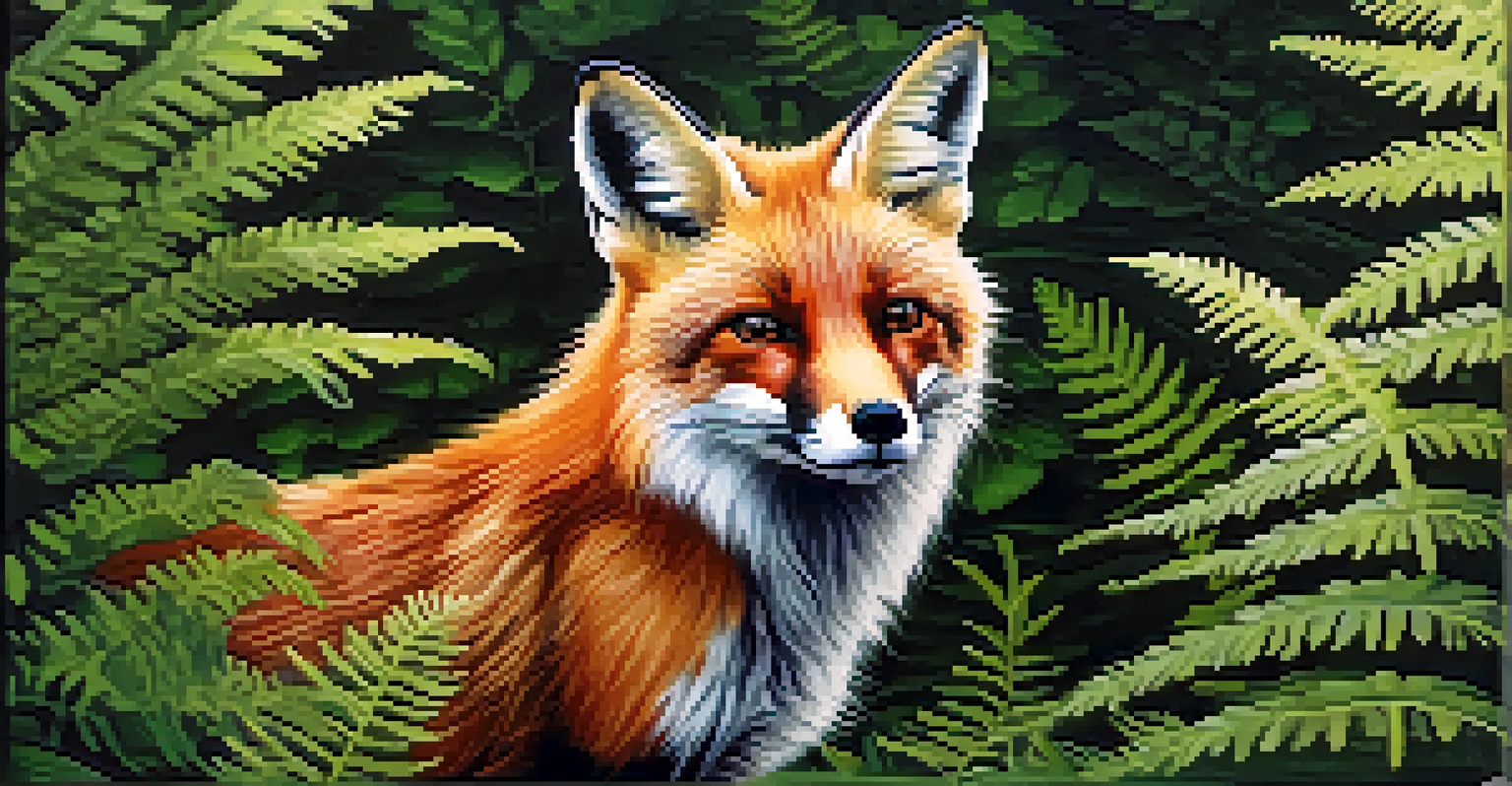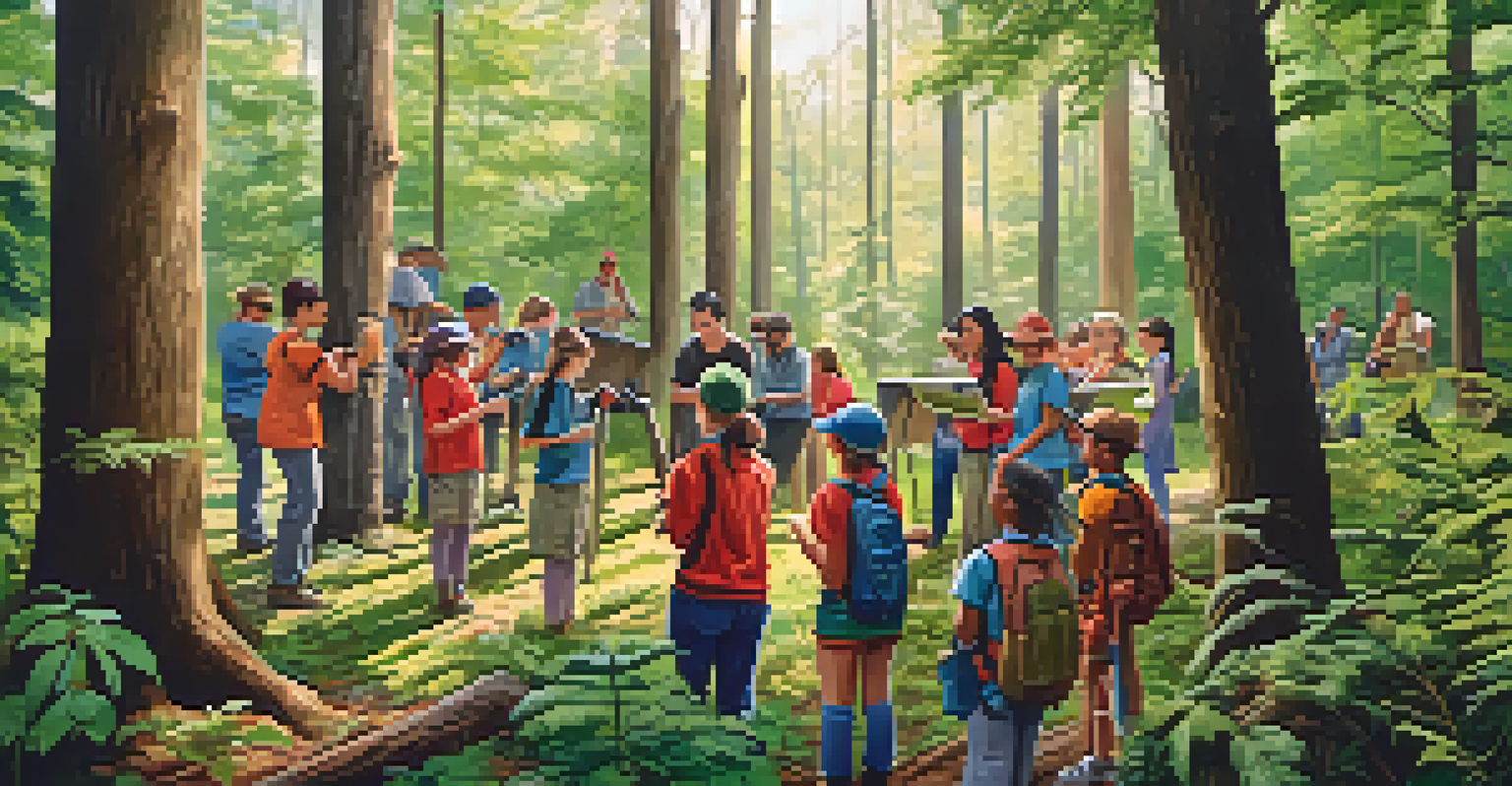Wildlife Conservation: Responsible Ways to Observe Animals

Understanding the Importance of Wildlife Conservation
Wildlife conservation is crucial for maintaining biodiversity, which is essential for ecosystem health. Every species plays a unique role, and their decline can disrupt natural processes. By understanding these interconnections, we can appreciate why protecting wildlife matters not just for the animals themselves, but for humanity's future as well.
The future will be what we make it, so let us make it a future in which we want to live.
The loss of habitats due to urbanization, pollution, and climate change poses a significant threat to wildlife. When we lose species, we also lose their contributions to the environment, which can lead to ecosystem instability. Therefore, conservation efforts are not just about saving animals; they're about preserving the delicate balance of nature that supports life on Earth.
Moreover, engaging in wildlife conservation can foster a sense of responsibility and connection to nature. When individuals and communities come together to protect wildlife, it cultivates a shared mission that can inspire future generations to prioritize environmental stewardship.
Choosing the Right Time and Place for Observing Wildlife
Timing is everything when it comes to observing wildlife. Many animals are most active during dawn and dusk, making these times ideal for spotting them in their natural habitats. Understanding the behavioral patterns of specific species can enhance your chances of having meaningful encounters while minimizing disturbance.

Location also plays a pivotal role in wildlife observation. National parks, wildlife reserves, and protected areas are often designed to provide safe environments for animals while allowing visitors to observe them responsibly. Researching these areas ahead of time can help you find the best spots to witness wildlife without causing harm.
Wildlife Conservation is Vital
Protecting wildlife is essential for maintaining biodiversity and ensuring a healthy ecosystem, which ultimately supports human life.
Avoiding locations that are overcrowded or heavily trafficked is essential. Wildlife can be sensitive to human presence, and too many visitors can stress them out or alter their natural behaviors. By opting for less popular times and locations, you contribute to a more peaceful experience for both yourself and the animals.
Respecting Wildlife: Keeping a Safe Distance
One of the golden rules of wildlife observation is to keep a safe distance. Approaching animals too closely can not only scare them but also put you at risk. Every species has its own comfort zone, and respecting that boundary is crucial for both your safety and their well-being.
In nature, nothing exists alone.
Using binoculars or a zoom lens allows you to observe animals without encroaching on their space. This not only enhances your viewing experience but also ensures that wildlife remains undisturbed in their natural habitat. Remember, the goal is to witness their behavior authentically, not to interfere.
Moreover, maintaining a respectful distance helps to foster a more genuine connection with nature. When animals feel secure, they are more likely to behave naturally, allowing you to witness the beauty of their interactions in the wild. This creates a deeper appreciation for the intricacies of wildlife and the importance of conservation.
Minimizing Your Impact on the Environment
When observing wildlife, it's essential to minimize your ecological footprint. This means following the 'Leave No Trace' principles, which encourage visitors to leave the environment as they found it. Simple actions like not littering, staying on designated trails, and avoiding the collection of natural materials can make a significant difference.
In addition, be mindful of the products you bring along. Using biodegradable items, such as eco-friendly sunscreen and reusable containers, can help reduce pollution in natural habitats. Every small choice contributes to a healthier environment for both wildlife and humans.
Respect Wildlife by Keeping Distance
Maintaining a safe distance while observing wildlife helps protect their well-being and enhances your experience of their natural behaviors.
Ultimately, being a responsible observer goes beyond just your immediate actions; it's about fostering a mindset of sustainability. By committing to practices that protect the environment, you contribute to the overall efforts of wildlife conservation, ensuring that future generations can enjoy the beauty of nature.
Educating Yourself About Local Wildlife
Before heading out to observe wildlife, take the time to educate yourself about the species native to the area. Understanding their behaviors, diets, and habitats can enhance your experience and increase your chances of spotting them. Plus, knowledge fosters respect and appreciation for these creatures.
Engaging with local conservation groups or wildlife organizations can provide valuable insights. These groups often offer workshops, guided tours, and resources that deepen your understanding of local ecosystems. Plus, connecting with like-minded individuals can enrich your wildlife observation experience.
Moreover, being informed about local wildlife laws and regulations is crucial. Many regions have specific guidelines to protect endangered species and their habitats. By staying informed, you not only enhance your experience but also contribute to the broader goal of conservation.
Using Technology Responsibly in Wildlife Observation
Technology can be a powerful ally in wildlife observation when used responsibly. From apps that identify bird calls to cameras that capture wildlife activity, these tools can enhance your appreciation for nature. However, it's essential to use them in a way that doesn't disturb the animals or their habitats.
For instance, using drones for wildlife photography can be controversial. While they offer unique perspectives, they can also cause stress to animals. Always consider the potential impact on wildlife before employing technology, and opt for non-invasive methods whenever possible.
Get Involved in Conservation Efforts
Participating in conservation initiatives and supporting organizations can significantly contribute to the preservation of endangered species and their habitats.
Additionally, sharing your experiences on social media can inspire others to appreciate wildlife, but it's important to do so ethically. Avoid posting locations of sensitive habitats or endangered species that could attract harmful attention. By promoting responsible wildlife observation, you can encourage a culture of conservation among your peers.
Participating in Conservation Efforts
One of the most impactful ways to support wildlife is by participating in conservation efforts. Many organizations offer volunteer opportunities, from habitat restoration projects to wildlife monitoring initiatives. Getting involved not only benefits the environment but also fosters a sense of community among fellow conservationists.
Donating to wildlife conservation organizations is another effective way to make a difference. These funds help support research, rescue efforts, and habitat preservation, directly contributing to the protection of endangered species. Even small contributions can add up to significant impacts over time.

Lastly, spreading awareness about wildlife conservation can inspire others to take action. Whether through social media, community events, or simply conversations with friends, sharing your passion for wildlife can encourage a ripple effect of awareness and responsibility. Every effort counts in the journey toward a more sustainable future.